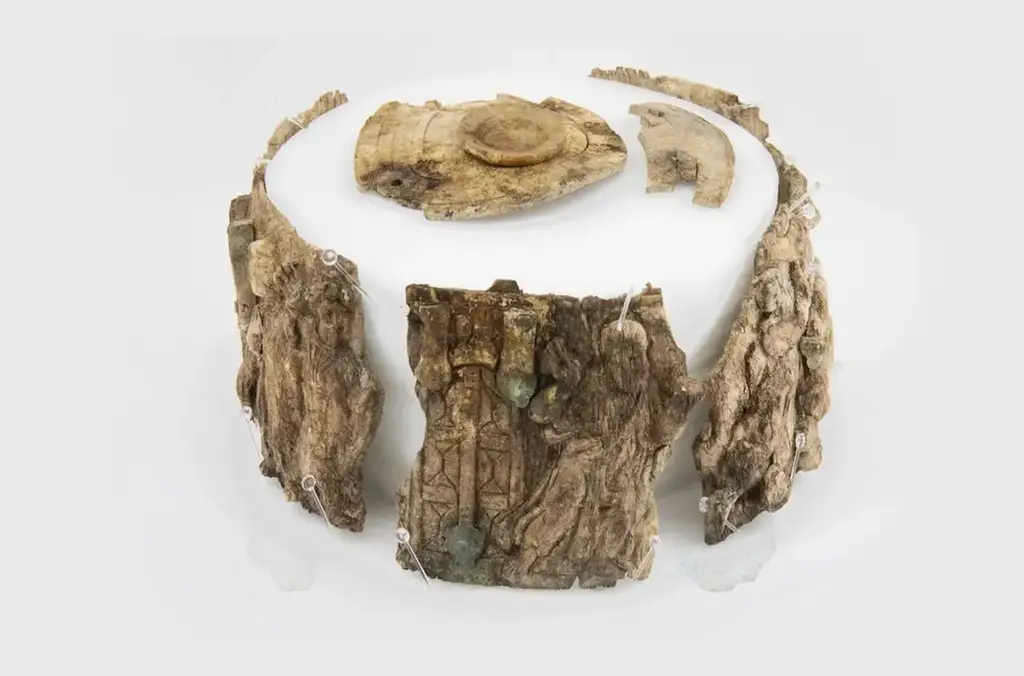Archaeologists from the University of Innsbruck have uncovered a 1,500-year-old reliquary during excavations of a hilltop settlement in southern Austria.
The settlement is located on the summit of Burgbichl, a small hill that rises on the south side of the Drau about 170 m above the floor of the upper Drava valley.
Excavations of an early Christian church, one of two churches excavated in the settlement, have revealed a marble altar measuring 20 by 30 centimetres. Beneath this altar, archaeologists found a fragmented ivory reliquary “pyx”, a container traditionally used to hold significant religious relics.
The use of reliquaries became an important part of Christian practices from at least the 4th century AD. Reliquaries were exhibited in public for visiting pilgrims or were carried in procession on the saint’s feast day or on other holy days.
“We know of around 40 ivory containers of this kind worldwide, and, as far as I know, the last time one of these was found during an excavation was around 100 years ago – the few pyxes that exist are either preserved in cathedral treasures or exhibited in museums,” explains the finder, Gerald Grabherr.
One side of the reliquary features a depiction of a mountain with a man turning his gaze away, and a hand extending from the heavens above him. This scene is interpreted as the handing of the covenant laws to Moses on Mount Sinai, first described in the Book of Joshua 8:31–32.

This is followed by depictions of biblical figures, such as a man riding a chariot and a hand coming from the clouds to pull this figure up into heaven. “We assume that this is a depiction of the ascension of Christ, the fulfilment of the covenant with God,” added Grabherr.
According to the researchers, the reliquary was already broken in late antiquity and was buried in the altar. “The pyx was presumably also seen as sacred and was treated as such because it was in contact with a relic. The archaeological and art-historical significance of the pyx cannot be denied,” said Gerald.
Header Image Credit : University of Innsbruck
Sources : University of Innsbruck







